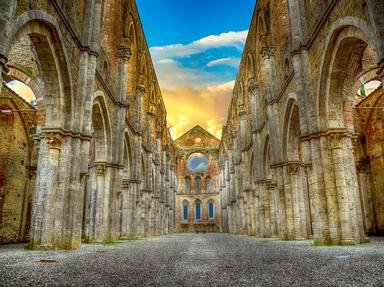Quiz Answer Key and Fun Facts
1. The Albigensian Crusade took place in which country?
2. Which English-born scholar was the chief architect of the Carolingian Renaissance?
3. What is the more common name for the Order of Friar Preachers?
4. Who was St. Thomas Aquinas's teacher and mentor?
5. Why was Peter the Hermit so successful in getting people of all backgrounds to join his peasant's crusade?
6. Which Frankish leader commanded the force that halted the Muslim march into Europe at the Battle of Tours in 732?
7. What medieval style of architecture was characterized by round or slightly pointed arches, barrel vaults, cruciform piers and thick walls?
8. Where was St. Boniface, patron saint to both Germany and the Netherlands, born?
9. Who founded the city of Dublin, Ireland, in 841?
10. Who founded the Cistercian Order in 1098?
Source: Author
ErisDyer
This quiz was reviewed by FunTrivia editor
bloomsby before going online.
Any errors found in FunTrivia content are routinely corrected through our feedback system.


